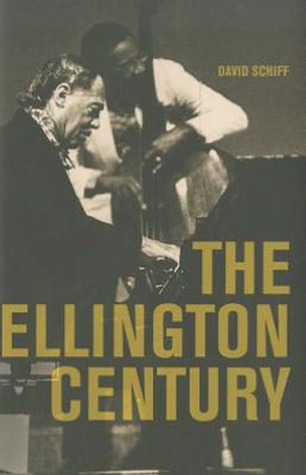
by Angela Moran

Published by University of California Press, 2012 | 336 pages
The Ellington Century is not a biography of Duke Ellington. It is not a history of jazz. It is something altogether more ambitious: an attempt at a wholesale reorientation of the way we think about twentieth-century music. Traditional musicology proceeds largely under the assumption that genres (“classical music,” “popular music,” jazz, not to mention non-Western musics) exist in different worlds, each treated as if separate from the others. When jazz figures in studies of Western art music — as it often does in discussions of composers like Ravel or Milhaud — it is generally acknowledged only as an authorless, undifferentiated flavouring. Surveys of modernism are particularly afflicted with this malaise. Though many of modernism’s most canonical figures resided for much of their lives in America, including Schoenberg (a long-time tennis partner to George Gershwin) and Stravinsky, scholars tend to approach them from a staunchly European perspective. Ellington, though far from the only composer discussed in the book, functions here as a lens through which to view the twentieth century from a new perspective, and, ultimately, as a means of forging a new conception of ‘modern music’.
Schiff begins with the proposition that all composers, whatever their background, must ultimately work with the same basic materials: instrumental colour, rhythm, melody and harmony. It is these four fundamental parameters that structure Part I of the book. A chapter is devoted to each, and within the individual sections Schiff works to demonstrate parallels between, for instance, Béla Bartók and Benny Goodman, arguing that what he terms “cubist rhythms” became a hallmark of high modernist style. In the chapter on tone colour, Schiff links Ellington’s fascination with colour — blue, black, beige — and his genius for timbre (the famous ‘Ellington effect’) and musical metaphor and traces each through various pieces, drawing connections that cut across the conventional narratives of cultural history, reaching out to relate Kandinsky’s synaesthesia, Debussy’s visually rich Symbolism, and more.
Part II focuses more closely on Ellington himself, situating him in his social milieu and exploring the extra-musical themes behind his work. Ellington’s long life (he was born in 1899 and lived to be seventy-five) spanned one of the most tumultuous periods of American history, a period that witnessed two World Wars, the Cold War, seismic social and economic shifts, the civil rights movement, an explosion of new media technologies, including radio, cinema and commercially-available sound recordings, a dramatic increase in urban expansion and a rapidly changing musical culture. This complex backdrop is the setting for the book’s three final chapters, which centre, respectively, around the subjects of love, history and religion. In these sections Schiff brings the issue of race sharply into focus, discussing the ways in which Ellington used his music to reflect and refract his experiences as an African-American (again, in this Schiff differs from most studies of musical modernism, which tend to skirt the question altogether). To cite one example, Schiff takes as the centrepiece of the book’s introduction Such Sweet Thunder, the title track of a twelve-movement suite based on Shakespeare’s Othello, which, of course, centres upon the issue of race. Schiff counterpoints the premiere of this work (on 28 April 1957 in New York’s Town Hall) with that of Stravinsky’s ballet Agon in the same year, just twelve blocks away, which “featured at its core an erotic pas de deux danced between the white Diana Adams and the black Arthur Mitchell.” It is juxtapositions like these that concern Schiff, all the more so because he reveals that they are not ‘juxtapositions’ at all — but rather points on a continuous thread running through the intricate, variegated pattern of twentieth century music.
Perhaps unsurprisingly, Schiff is not a musicologist, but instead a composer and journalist. His writing is accessible and enthusiastic; he clearly loves Ellington’s music. Though this style is appealing, and makes The Ellington Century an entertaining read, Schiff occasionally falls into long descriptions of the music, as if trying to recreate the listening experience — an impossible task. That minor drawback aside, the book is an invaluable contribution to music history. Limited, of necessity, by the scope of its 300-odd pages, it nonetheless opens the door to a new understanding of modernism, one that resists traditional narratives of stratification and embraces history in all its messy complexity.
Originally from the UK, Caroline Waight is a graduate student at Cornell University. Her work focuses on music in the early twentieth century.















click to see who
MAKE Magazine Publisher MAKE Literary Productions Managing Editor Chamandeep Bains Assistant Managing Editor and Web Editor Kenneth Guay Fiction Editor Kamilah Foreman Nonfiction Editor Jessica Anne Poetry Editor Joel Craig Intercambio Poetry Editor Daniel Borzutzky Intercambio Prose Editor Brenda Lozano Latin American Art Portfolio Editor Alejandro Almanza Pereda Reviews Editor Mark Molloy Portfolio Art Editor Sarah Kramer Creative Director Joshua Hauth, Hauthwares Webmaster Johnathan Crawford Proofreader/Copy Editor Sarah Kramer Associate Fiction Editors LC Fiore, Jim Kourlas, Kerstin Schaars Contributing Editors Kyle Beachy, Steffi Drewes, Katie Geha, Kathleen Rooney Social Media Coordinator Jennifer De Poorter
MAKE Literary Productions, NFP Co-directors, Sarah Dodson and Joel Craig